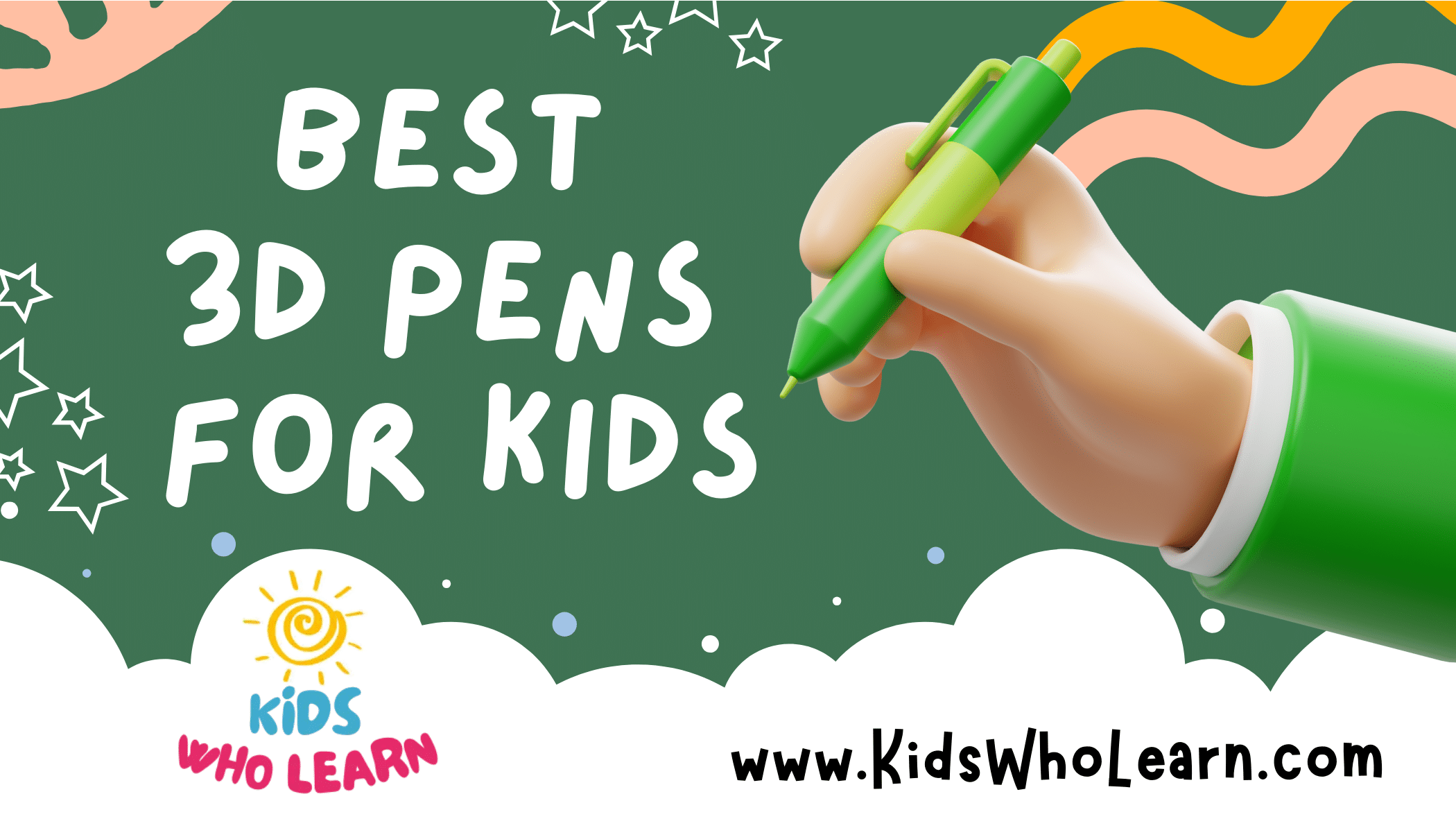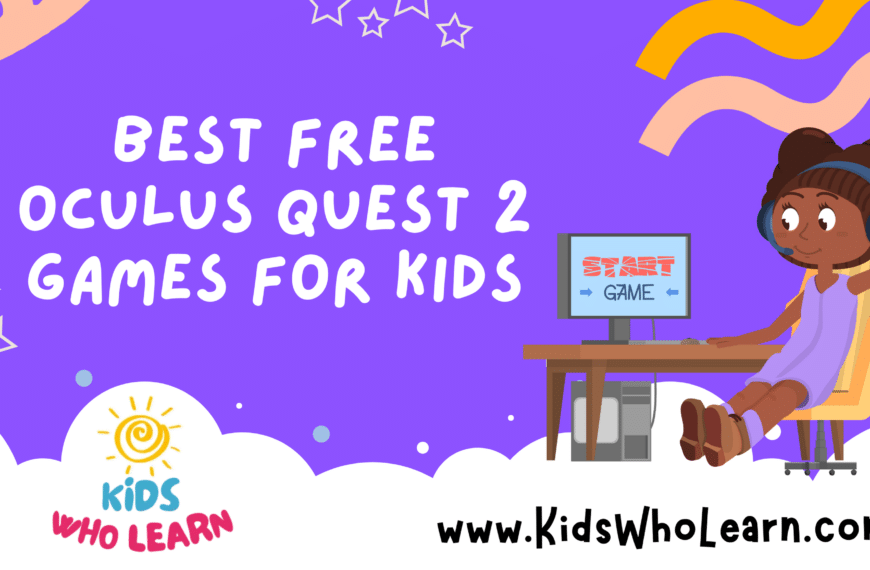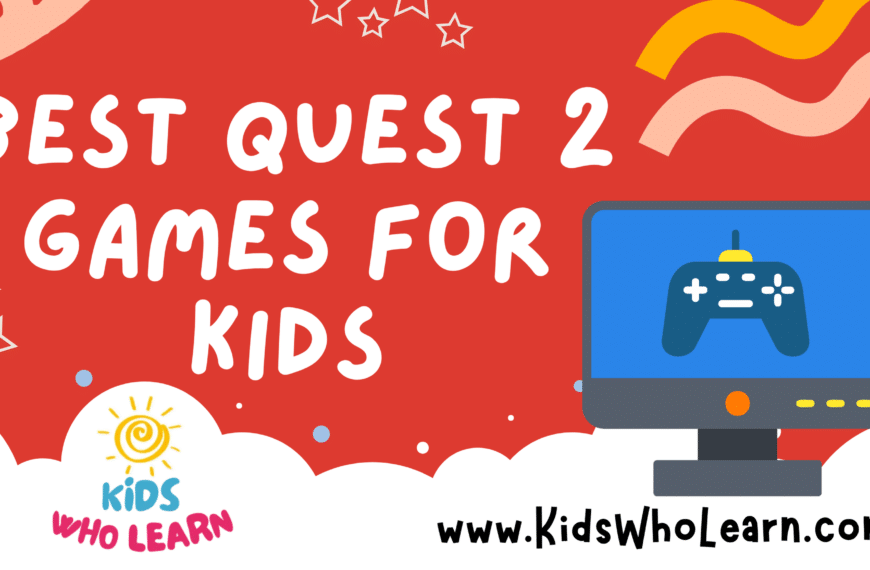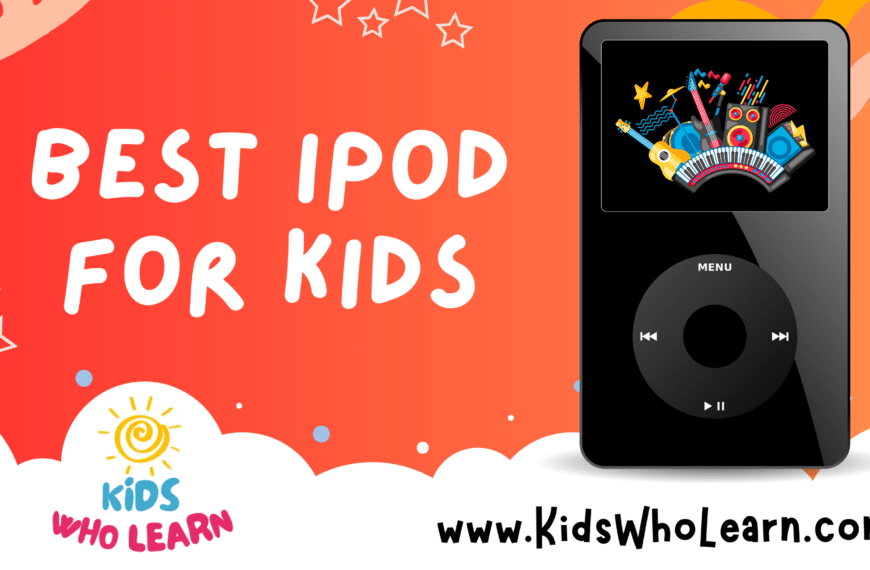In the world of creative tools for children, 3D pens have emerged as an exciting avenue for imagination and innovation. Unlike traditional drawing methods, 3D pens allow kids to bring their artistic visions to life in three dimensions, offering a tactile experience that enhances understanding of spatial relationships and design principles. The concept is simple: as a pen extrudes heated plastic that cools and solidifies quickly, the user can draw upwards and create structures out of thin air.
However, picking a 3D pen that is suitable for children involves considering various factors. It’s essential to ensure the device is safe for a child’s use, with features such as a non-toxic plastic filament and a pen that remains cool to the touch to prevent burns. Moreover, ease of use is crucial, as complicated controls can quickly discourage young creators. The weight and ergonomics of the pen are also important, as they should accommodate smaller hands for extended periods of drawing without causing discomfort.
Durability is another key aspect to look out for, as kids will be kids — their tools need to withstand the occasional drop or mishap. And lastly, consider the range of colors and types of filament the pen can use, as this will determine the versatility and attractiveness of the projects your child can undertake. With these considerations in mind, we’ve evaluated several 3D pens that stand out for their child-friendly designs and features.
Selecting the best 3D pen for a child hinges on balancing safety, ease of use, and the ability to inspire creativity. As we transition to discussing specific models, we will focus on those that excel in fostering a child’s imagination and skill development, while ensuring they are using a tool that’s as safe as it is fun.
Top 3D Pens for Kids
In our search for engaging and educational tools for children, we have meticulously compiled a selection of the best 3D pens that are both safe and suitable for young creatives. Our chosen products are designed to inspire imagination and foster an interest in technology and art, offering an exciting blend of fun and learning opportunities. Every 3D pen on our list has been evaluated for ease of use, safety features, and overall quality to ensure that our recommendations meet the high standards necessary for kids to explore their artistic potential.
MYNT3D Junior2
If you’re in search of a 3D pen created with kids’ safety in mind, the MYNT3D Junior2 could be a perfect choice due to its child-friendly design and low-temperature operation.
Pros
- Ergonomically crafted for young hands
- Low temperature nozzle for added safety
- Sealed nozzle design to prevent clogs
Cons
- Not compatible with ABS or PLA filament
- Battery life could be limited
- Micro USB charging without AC adapter
3D printing pens have revolutionized the world of drawing, enabling the creation of three-dimensional artworks. The MYNT3D Junior2 brings this innovation to the younger crowd. Its design specifically caters to kids’ abilities and safety, with a low temperature nozzle that helps prevent unintended burns. This is especially reassuring when they’re engrossed in transforming their imagination into 3D reality.
Considering ease of use, the ergonomic shape of the MYNT3D Junior2 ensures that little hands can grip and maneuver the pen without difficulty. This accessibility encourages prolonged use and sustained interest, which can contribute significantly to the development of spatial awareness and creative skills.
Our research suggests that the MYNT3D Junior2 is an engaging tool for young creators. However, it’s important to note the device’s limitations, such as its incompatibility with popular 3D printing materials like ABS or PLA. Plus, recharging may be frequent due to possibly shorter battery life, and the absence of an AC adapter means you’ll need to have a compatible USB charging solution on hand. Despite these considerations, the MYNT3D Junior2 emerges as a compelling option for introducing the wonders of 3D drawing to children.
3Doodler Start+ Pen Set
For those seeking a safe and creative tool to reduce screen time and boost their child’s imagination, the 3Doodler Start+ Essentials Pen Set ticks the right boxes.
Pros
- No burn risks with child-safe design
- More plastics and stencils for varied creations
- Promotes learning away from screens, fostering creativity
Cons
- Only compatible with proprietary filaments
- Refill plastics can be costly over time
- Limited reuse if the interest wanes quickly
When we look at this 3D pen designed specifically for younger users, the safety measures inherent in the 3Doodler Start+ Pen Set stand out. The absence of any hot parts reassures us that kids can explore their creativity without the risk of burns, making it suitable for ages 6 and up. The inclusion of extra plastics and stencils is a thoughtful touch, providing a broader canvas for exploration.
Balancing the digital and physical worlds is increasingly challenging, but the 3Doodler Start+ engages young minds in hands-on, educational play. Its ability to quickly bring ideas into three dimensions supports learning in STEM fields and beyond. As a screen-free option, it becomes an ally in a parent’s toolkit for encouraging learning through play.
Not every story has only high points, and the 3Doodler Start+ is no exception. The requirement for proprietary filaments means additional purchases are a given. Over time, the expense can add up, slightly dimming its otherwise bright appeal. Furthermore, as with many children’s toys and gadgets, longevity of interest is a factor. We can’t ignore that this innovative pen may eventually end up forgotten in the toy chest.
Nonetheless, the 3Doodler Start+ Pen Set offers a unique blend of fun and education. In the grand scheme of things, it’s a nifty gadget that bridges the gap between playtime and learning, worthy of consideration for the fusion it offers.
MYNT3D Super 3D Pen
We think the MYNT3D Super 3D Pen is a solid choice for those stepping into the world of 3D art, offering a balance of control and ease of use.
Pros
- Adjustable speed control for precision
- Compatible with both ABS and PLA filaments
- Ergonomic design reduces hand fatigue
Cons
- Limited to three colors of plastic filament included
- Learning curve might be challenging for some kids
- Potential for clogging without proper maintenance
For parents hunting for a tool to boost their children’s creativity, the MYNT3D Super 3D Pen presents an intriguing option. Its adjustable extrusion speed sets it apart from many alternatives, giving young artists the flexibility to fine-tune their designs with varying line widths and textures. The temperature adjustability further enhances this versatility, making it simple to switch between ABS and PLA filaments.
When weighing up the educational and entertainment value, affordability is a notable highlight. The initial investment guarantees a pen that’s built to last, which is crucial when it comes to kid’s often robust usage. The ergonomic design is thoughtfully crafted to fit small hands, minimizing discomfort and ensuring that longer projects don’t lead to strains or aches.
However, it’s worth noting that every new tool comes with a learning phase. For children, mastering the MYNT3D Super 3D Pen might require patience and practice. The included filaments are only offered in three colors, which may limit the creative options, at least initially. Regular maintenance is important too, as the nozzle may clog if not cared for properly. Still, these are small hurdles on the road to unlocking a whole new dimension of artistic potential.
Elonbo Travel Case for 3Doodler
For those of us searching for a secure method to store and transport children’s 3D pens and accessories, the Elonbo Hard Travel Case fits the bill with its robust and organized design.
Pros
- Sturdy protection against drops and shocks
- Compact dimensions for easy portability
- Additional pockets for accessories storage
Cons
- Exclusively designed for a specific 3D pen model
- Limited space for larger collections of accessories
- Can be perceived as misleading without reading the description carefully
When you’re on the move, the last thing you want is the hassle of tangled cords and misplaced 3D pen accessories. That’s where the Elonbo Hard Travel Case shines. Its tough exterior and soft interior give peace of mind that the 3D pen essentials are safely stowed away, ready for your child’s next burst of creativity.
We appreciate designs that consider the inevitable wear and tear of travel. The Elonbo case features a resilient hard shell that seems more than capable of holding its own against the rigors of a kid’s busy day. It can slip easily into a bag, making it ideal for any trip.
Let’s face it, organization is key with tech gadgets. The mesh pocket inside this case ensures that all the little bits—a charger, filaments, and more—are snugly in place. It’s a simple feature that makes a world of difference in maintaining order amidst a child’s creative chaos.
OVERTURE 3D Filament
We find this 3D pen filament to be an excellent choice for creative kids, offering variety and quality to enhance their projects.
Pros
- Offers a vast palette of 24 colors for endless creativity.
- The filament is engineered to reduce clogging and ensure consistency.
- Unique finishes like silk and glow-in-the-dark provide additional options for creativity.
Cons
- Limited to 10 feet per color which might be insufficient for larger projects.
- Beginners might find it challenging to adjust settings for different filament types.
- Higher temperature requirement may need careful handling and supervision.
In exploring creative tools for young minds, the variety of colors and finishes in OVERTURE 3D Pen Filament Refills can open up a world of possibility. The selection of 13 basic, 8 silk, 2 matte, and 1 glow-in-the-dark colors ensures that every project stands out. Whether it’s a school assignment or a leisurely pastime, the medium offers a mix of traditional and exotic options to encourage out-of-the-box thinking and learning.
We appreciate the attention to detail that OVERTURE puts into their filaments. The claimed dimensional accuracy and consistent diameter bode well for a smooth drawing experience. It’s paramount for us that kids encounter minimal frustration when they’re in the zone, creating their 3D art. Plus, the included clog-free and bubble-free features suggest reliability, so there’s more time spent making and less time troubleshooting.
While the product is aimed at kids, we understand that supervision may sometimes be necessary, particularly when dealing with the high temperatures required to melt the PLA filament. However, we must recognize the potential need to purchase additional filament, since each color comes in only 10-foot lengths, which may not be enough for larger, more ambitious creations. Still, the OVERTURE 3D Filament pack appears to be a solid choice, likely to enhance any child’s 3D pen experience with its variety and quality.
ANKHOH Storage Case
We believe this case is essential for keeping your child’s 3D pen set organized and protected, though please note it’s only a case.
Pros
- Custom-fit for 3Doodler Start+ Essentials
- Organized storage for filament and USB charger
- Durable exterior to protect against impacts
Cons
- Case does not include 3D pen or filaments
- Some customers found the product description misleading
- Limited user reviews for comprehensive assessment
This ANKHOH storage case is crafted for the 3Doodler Start+ Essentials, ensuring your kids’ 3D pen and accessories stay secure. Its particular design safeguards the pen along with its filaments and USB charger. It’s especially useful for maintaining order amongst your child’s creative tools, providing both neatness and protection.
Despite being a robust solution for careful storage, there’s a catch: the case arrives alone, without a 3D pen or filament. A few customers felt the product listing was ambiguous, as they were expecting the full set. It’s crucial to read the fine print to avoid any confusion and to make sure you’re getting exactly what you expect.
With only a handful of reviews, it is a bit challenging to gauge widespread satisfaction. Nonetheless, if it’s clear what this case offers, it could very well be a valuable addition to your child’s 3D printing experience. It keeps the workshop tidy, the tools in check, and creativity blooming without the mess—or the chance of accidental damage due to lack of protection.
Rilitor 3D Pen Filaments
We recommend the Rilitor 3D Pen Filaments to spark creativity in kids and adults alike, thanks to its ease of use and vibrant color selection.
Pros
- Consists of non-toxic, eco-friendly PLA material, making it safer for kids
- Comes with a variety of 12 colors, enhancing creative options
- Strong compatibility with most 3D pens using 1.75mm PLA filament
Cons
- Limited length per color might restrict bigger projects
- Filament quality may vary, affecting the finish of creations
- Some users reported issues with color accuracy
In the realm of 3D pen filaments, safety is paramount, especially when the intended users are children. The Rilitor filaments meet this criterion, being crafted from PLA—a non-toxic, corn-based plastic—ensuring a safer crafting environment for kids. Additionally, the array of colors is bound to stimulate young minds, inviting them to explore their artistic abilities.
With compatibility, we can breathe easy; the Rilitor filaments are designed to function with a broad range of 3D pens that accommodate 1.75mm diameter filaments. This versatility means less worry about finding the right match for a pen and more focus on the creative process. As parents and educators, we always seek products that simplify rather than complicate, and these filaments do just that.
However, no product is without its imperfections. Each color’s segment may seem somewhat short for children engrossed in larger projects. Furthermore, there have been instances where the hues didn’t quite match expectations and the filament’s performance was inconsistent. These are points to bear in mind when envisioning the scope and scale of 3D creations your kids might undertake.
Buying Guide
When choosing a 3D pen for kids, we must consider several features to ensure it’s safe, user-friendly, and appropriate for the child’s age.
Safety Features
The safety of a 3D pen is paramount. We look for:
- Low-Temperature Operation: A pen that operates at lower temperatures is preferred to prevent burns.
- Automatic Shut-off: This ensures the pen turns off after a period of inactivity.
Ease of Use
A good 3D pen should be easy for a child to handle and operate. Our focus includes:
- Ergonomic Design: It should be comfortable for small hands to hold.
- Intuitive Controls: Simple buttons and operations are essential for usability.
Filament Type
The type of filament is important for both safety and creativity:
- Non-toxic Filament: Ensure the filament is safe for kids and doesn’t emit harmful fumes.
- Filament Compatibility: Some pens accept multiple filament types, offering versatility.
Age Appropriateness
Match the complexity of the pen to the child’s age:
- Simplified Pens for Younger Kids: Younger children benefit from more basic models with fewer adjustable settings.
- Advanced Features for Older Kids: As children grow, they may appreciate adjustable speeds and temperature controls to refine their creations.
Maintenance and Durability
Lastly, the pen should be durable and easy to maintain. We consider:
- Sturdy Construction: It should withstand the occasional drop or mishap.
- Ease of Cleaning: Look for pens that are simple to clean in case of a filament jam.
To summarize, here’s a quick reference table:
| Criteria | What to Look For |
|---|---|
| Safety Features | Low heat tip, automatic shut-off |
| Ease of Use | Ergonomic, intuitive controls |
| Filament Type | Non-toxic, multi-type support |
| Age Appropriateness | Age-matched features and controls |
| Maintenance | Durable build, easy to maintain |
Choosing the best 3D pen involves balancing these features based on the individual needs of the child.
Frequently Asked Questions
In this section, we cover some of the most common inquiries regarding 3D pens for children, focusing on safety, educational value, age appropriateness, and differences from professional-grade 3D pens.
What safety features should I look for in a 3D pen for children?
We recommend choosing a 3D pen with a low-temperature nozzle and safety shut-off features to ensure a child’s use is both secure and monitored. Some pens are specifically designed with anti-burn measures to safeguard against accidents.
How does a 3D pen foster creativity and learning in kids?
3D pens encourage children to visualize and build their ideas in three dimensions, enhancing spatial awareness, fine motor skills, and artistic abilities. It’s a hands-on tool that merges play with educational outcomes, such as planning and problem-solving.
What is the recommended age range for using a 3D printing pen?
Generally, 3D pens are suitable for children 8 years and older. However, some pens are tailored for younger users. Always consult the manufacturer’s age recommendation as it reflects the pen’s complexity and safety features.
Can 3D pens be used for educational purposes in schools?
Absolutely. 3D pens are valuable in educational settings, providing an interactive experience that complements STEM (Science, Technology, Engineering, and Math) curricula and helps in understanding geometric concepts and design principles.
What are the differences between 3D pens for kids and professional 3D pens?
3D pens for kids are usually more robust, with simple controls and safety mechanisms, whereas professional 3D pens offer higher precision, adjustable temperature settings, and more advanced features for experienced users.
How do I choose the best 3D pen for a child with no prior experience?
Look for a 3D pen with an intuitive design, ease of use, and quick start-up guides. Picking a pen with a variety of color options and free-forming stencils can also make the initial learning process more enjoyable for a beginner.













